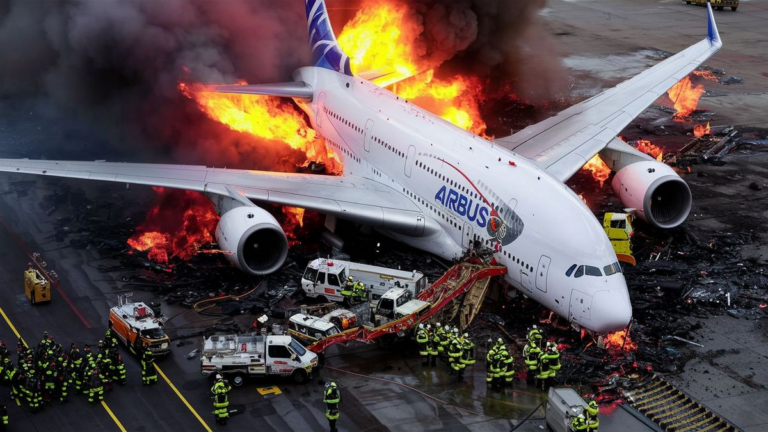An Airbus A380 engine fire is a critical aviation incident that poses significant risks to the safety of passengers and crew onboard as well as the integrity of the aircraft itself. Engine fires can occur due to various reasons including mechanical failures, fuel leaks, or foreign object damage. The consequences of such incidents can range from emergency landings to catastrophic accidents, highlighting the importance of effective preventive measures and emergency response protocols.
Causes of Airbus A380 Engine Fires
There are several potential causes that can lead to an engine fire on an Airbus A380:
- Mechanical failures within the engine components.
- Fuel leaks or ignition within the engine or its surrounding components.
- Foreign object damage caused by debris on the runway or in-flight.
Impacts of Engine Fires
The consequences of an engine fire on an Airbus A380 can be severe:
- Loss of engine power, requiring immediate emergency procedures.
- Smoke or fire in the cabin, posing health risks to passengers and crew.
- Potential damage to other aircraft systems or structures.
Preventive Measures
To mitigate the risk of engine fires on Airbus A380 aircraft, several preventive measures are implemented:
- Rigorous maintenance schedules to identify and address potential issues before they escalate.
- Regular inspections and tests of engine components for signs of wear or malfunction.
- Strict adherence to safety protocols during refueling operations to prevent fuel leaks.
Emergency Response Protocols
In the event of an engine fire on an Airbus A380, trained pilots and crew follow specific emergency response protocols:
- Immediate notification to air traffic control and declaration of emergency status.
- Activation of fire suppression systems within the affected engine.
- Implementation of emergency descent procedures to rapidly decrease altitude.
- Preparation for an emergency landing at the nearest suitable airport.
An Airbus A380 engine fire is a serious aviation incident that demands swift and effective action to ensure the safety of everyone onboard. By understanding the potential causes, impacts, and preventive measures associated with engine fires, aviation authorities, airlines, and aircraft manufacturers can work together to enhance safety standards and minimize the risk of such incidents.
Investigation Process
Following an Airbus A380 engine fire incident, a thorough investigation is typically conducted to determine the root cause and prevent future occurrences. This investigation involves:
- Gathering data from flight recorders, maintenance logs, and witness accounts.
- Examining the engine and aircraft components for evidence of mechanical failure or damage.
- Analysis of fuel samples and engine performance data.
Training and Preparedness
Ensuring pilots and crew are adequately trained to handle emergency situations like engine fires is crucial. Training programs cover:
- Simulated scenarios in flight simulators to practice emergency response procedures.
- Regular training updates to incorporate new protocols and technologies.
- Team coordination and communication strategies during high-stress situations.
Frequently Asked Questions
Below are some frequently asked questions regarding Airbus A380 engine fires:
| Question | Answer |
|---|---|
| What should passengers do in the event of an engine fire? | Passengers should follow the instructions of the flight crew, which may include assuming brace positions and preparing for emergency landing. |
| How often are Airbus A380 engines inspected? | Engine inspections are conducted according to strict maintenance schedules mandated by aviation authorities and the aircraft manufacturer. |
| Are engine fires common on Airbus A380 aircraft? | Engine fires are rare occurrences but are taken very seriously due to their potential for catastrophic consequences. |
Additional Safety Measures
Besides preventive maintenance and emergency protocols, additional safety measures can further enhance the resilience of Airbus A380 aircraft:
- Installation of advanced fire detection and suppression systems.
- Continuous monitoring of engine health using onboard sensors and real-time data transmission.
- Collaboration with regulatory agencies and industry stakeholders to exchange best practices and lessons learned.
See also:






